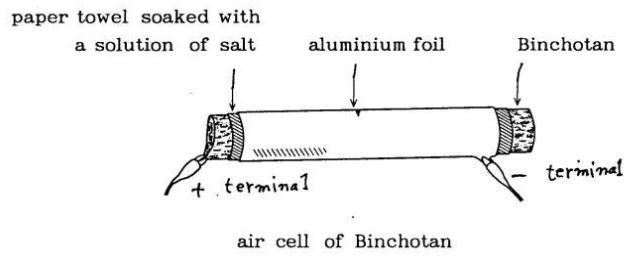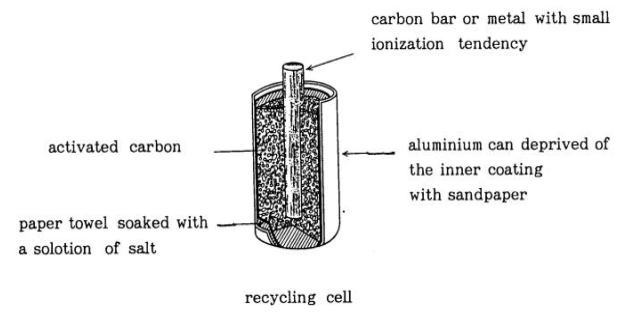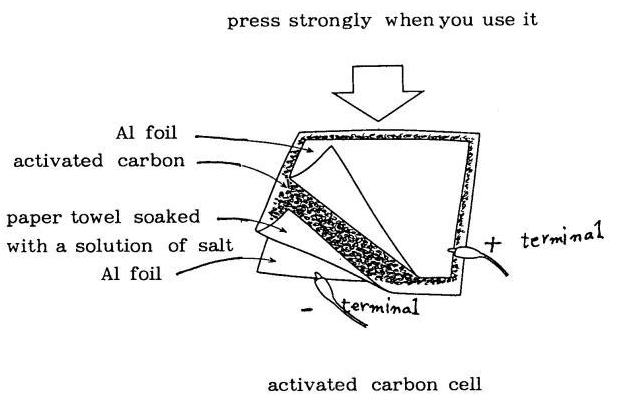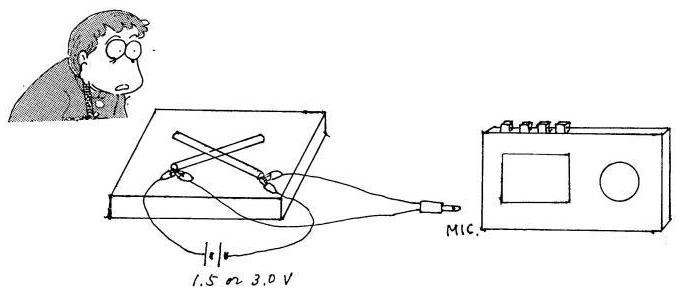
Return to Mterials for physics education
Return to English home page
PD`@
@
@@@
yMaterialsz
Binchotan (the resistance is about 10Ά)
We can use activated carbon for deodorant instead of Binchotan.
Aluminium foil
leading cords
kitchen paper towel
salt



Return to Mterials for physics education
Return to English home page
QDa@
( Edison type )
yMaterialsz
Binchotan
leading cords
electric battery
battery case
cassette tape recorder
yPreparationz
@(1) Crossing two pieces of Binchotan on a box of cardboard, you connect
them with an electric cell by leading cords.
@(2) After connecting the ends of both Binchotans by leading cords with
microphone terminal of a tape recorder, you switch on the circuit.
yHow to usez
@(1) Please speak to the box , recording by the tape recorder. Because
of the vibration of the box the electric resistance between both pieces
of charcoals changes. Then we can get electric signals as change of voltage.
@ (2) You make sure of the recorded voice playing it back. Could you record your voice ?

Return to Mterials for physics education
Return to English home page